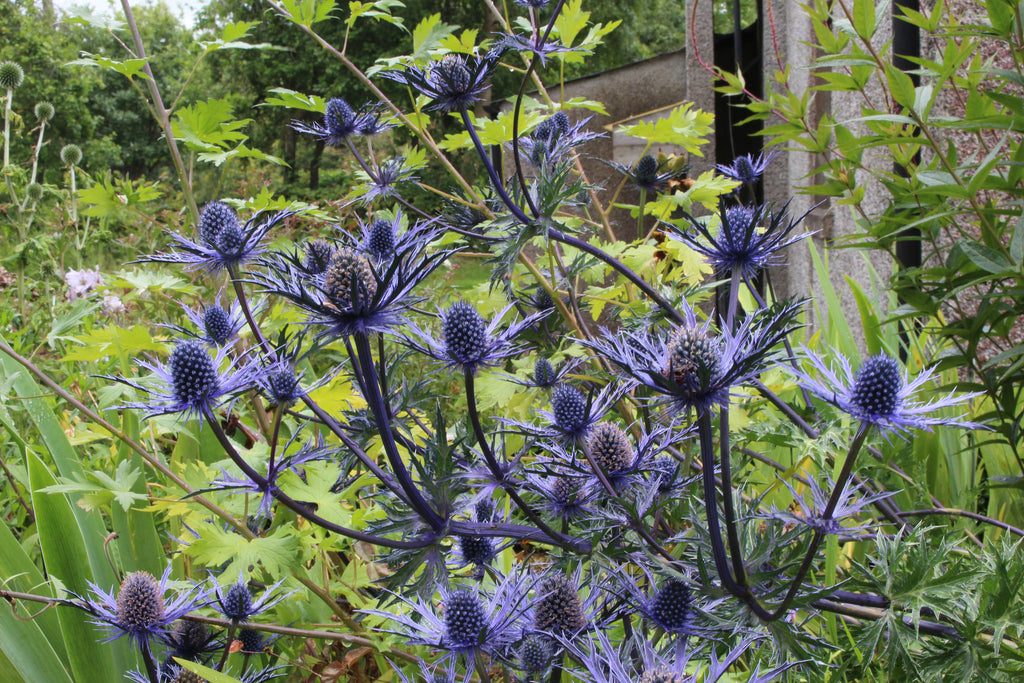




About this cultivar:
Eryngium 'Cobalt Star' is a new bourgatii hybrid, producing vigorous clumps of flowers that turn an intense cobalt-blue as the season goes on!
- Position: Full sun, partial shade
- Soil: Almost any soil, grows well in Ballyrobert
- Flowers: July, August, September, October
- Other features: Grows well in Ballyrobert, Bees and Butterflies, Interesting Foliage or Fruit, Cut Flowers or Dried Flowers
- Hardiness: Fully hardy - grows well in Ballyrobert!
- Habit: Clump forming, bushy
- Foliage: Deciduous
- Height: 60 - 90 cm (2 - 3 ft)
- Spread: 45 - 75 cm (1.5 - 2.5 ft)
- Time to full growth: 2 to 5 years
- Plant type: Herbaceous Perennial
- Colour: Green, blue
- Goes well with: Verbena bonariensis, Verbascum, Perovskia, Aconitum, Artemisia, Achillea, Iris, Deschampsia or even Rudbeckia.
About this genus:
Eryngium (e-ring-e-um or er-in-je-um) is a genus of flowering plants with over 250 species that, believe it or not, are in the carrot family (Apiaceae). Common names include eryngo, spiny coriander, culantro and the more popular sea holly (though the genus is not related to the true hollies, Ilex). People also often think it is a thistle (Cirsium)! Apparently you can eat the roots or use them as flavouring, although I've never tried (I guess it is in the carrot family after all.....)
Often annual and perennials with hairless and usually spiny leaves; we only grow and sell the perennial cultivars. As the common name would imply some species are native to rocky and coastal areas, but the majority are grassland plants. Despite the reputation of dry-soil-only plants we are proud of the fact we have found many cultivars that tolerate a bit of wet in our clay soil in our garden at Ballyrobert; much to the consternation of the book-believing gardeners! We sell them here. We grow them anywhere that isn't completely soaked or completely shaded although we will concede that most prefer a dry and sunny spot.
Often Eryngium are almost architectural plants and look great by themselves - when they die back for the season they keep their attractive structure. However do try them with Verbena bonariensis, Verbascum, Perovskia, Aconitum, Artemisia, Achillea, Iris, Deschampsia or even Rudbeckia. Red and blue make a good combination in my opinion. A bit like grasses; think about the light you have before planting out in order to make the most of these wonderful plants!

